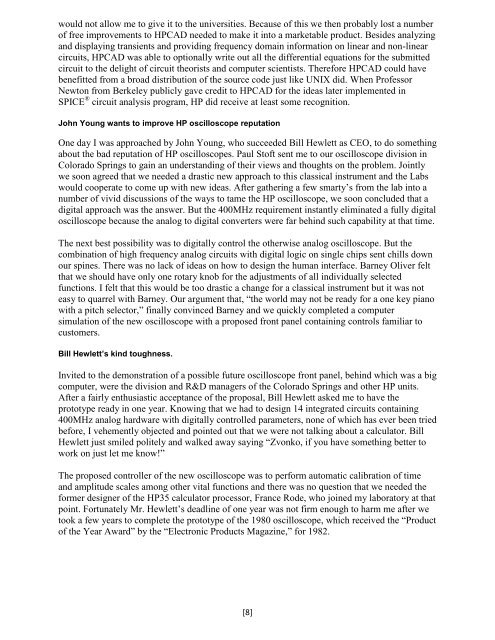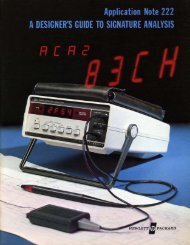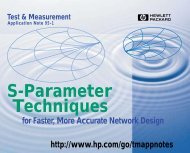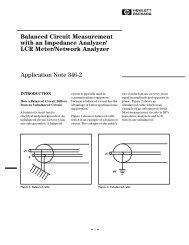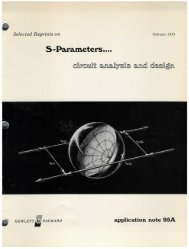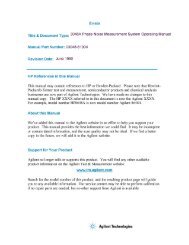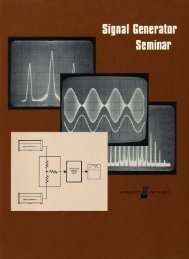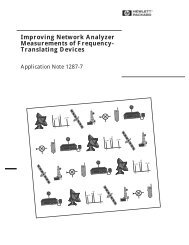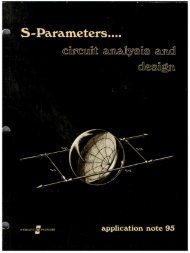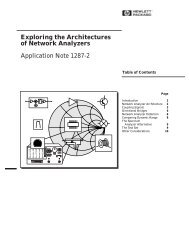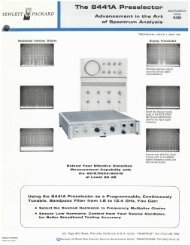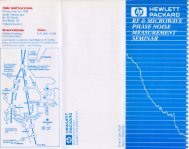My Association with HP - HP Memory Project
My Association with HP - HP Memory Project
My Association with HP - HP Memory Project
You also want an ePaper? Increase the reach of your titles
YUMPU automatically turns print PDFs into web optimized ePapers that Google loves.
would not allow me to give it to the universities. Because of this we then probably lost a numberof free improvements to <strong>HP</strong>CAD needed to make it into a marketable product. Besides analyzingand displaying transients and providing frequency domain information on linear and non-linearcircuits, <strong>HP</strong>CAD was able to optionally write out all the differential equations for the submittedcircuit to the delight of circuit theorists and computer scientists. Therefore <strong>HP</strong>CAD could havebenefitted from a broad distribution of the source code just like UNIX did. When ProfessorNewton from Berkeley publicly gave credit to <strong>HP</strong>CAD for the ideas later implemented inSPICE ® circuit analysis program, <strong>HP</strong> did receive at least some recognition.John Young wants to improve <strong>HP</strong> oscilloscope reputationOne day I was approached by John Young, who succeeded Bill Hewlett as CEO, to do somethingabout the bad reputation of <strong>HP</strong> oscilloscopes. Paul Stoft sent me to our oscilloscope division inColorado Springs to gain an understanding of their views and thoughts on the problem. Jointlywe soon agreed that we needed a drastic new approach to this classical instrument and the Labswould cooperate to come up <strong>with</strong> new ideas. After gathering a few smarty’s from the lab into anumber of vivid discussions of the ways to tame the <strong>HP</strong> oscilloscope, we soon concluded that adigital approach was the answer. But the 400MHz requirement instantly eliminated a fully digitaloscilloscope because the analog to digital converters were far behind such capability at that time.The next best possibility was to digitally control the otherwise analog oscilloscope. But thecombination of high frequency analog circuits <strong>with</strong> digital logic on single chips sent chills downour spines. There was no lack of ideas on how to design the human interface. Barney Oliver feltthat we should have only one rotary knob for the adjustments of all individually selectedfunctions. I felt that this would be too drastic a change for a classical instrument but it was noteasy to quarrel <strong>with</strong> Barney. Our argument that, “the world may not be ready for a one key piano<strong>with</strong> a pitch selector,” finally convinced Barney and we quickly completed a computersimulation of the new oscilloscope <strong>with</strong> a proposed front panel containing controls familiar tocustomers.Bill Hewlett’s kind toughness.Invited to the demonstration of a possible future oscilloscope front panel, behind which was a bigcomputer, were the division and R&D managers of the Colorado Springs and other <strong>HP</strong> units.After a fairly enthusiastic acceptance of the proposal, Bill Hewlett asked me to have theprototype ready in one year. Knowing that we had to design 14 integrated circuits containing400MHz analog hardware <strong>with</strong> digitally controlled parameters, none of which has ever been triedbefore, I vehemently objected and pointed out that we were not talking about a calculator. BillHewlett just smiled politely and walked away saying “Zvonko, if you have something better towork on just let me know!”The proposed controller of the new oscilloscope was to perform automatic calibration of timeand amplitude scales among other vital functions and there was no question that we needed theformer designer of the <strong>HP</strong>35 calculator processor, France Rode, who joined my laboratory at thatpoint. Fortunately Mr. Hewlett’s deadline of one year was not firm enough to harm me after wetook a few years to complete the prototype of the 1980 oscilloscope, which received the “Productof the Year Award” by the “Electronic Products Magazine,” for 1982.[8]


